Troves Of Iranian Hacked Insurance Customer Data On Sale
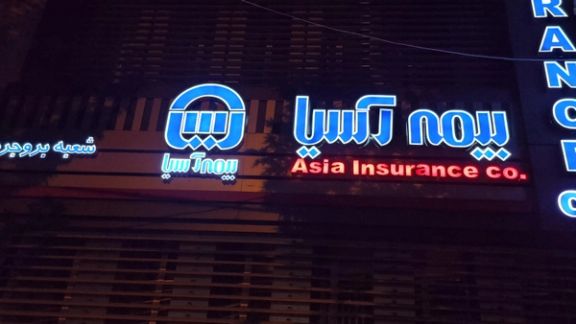
Anonymous hackers are selling 160 million customer information records cobbled together from 23 Iranian insurance companies for approximately $75,000.

Anonymous hackers are selling 160 million customer information records cobbled together from 23 Iranian insurance companies for approximately $75,000.
The Iranian Leakage Tracking System (Leakfa) has confirmed the validity of the hackers' claim, stating that the information was obtained through a breach of the Expert Information Technologists (Fanavaran) company infrastructure.
The information offered for sale on the dark web includes details such as name, national number, date of birth, address, zip code, and mobile phone, all the data needed to possibly forge identities. The report of the hack first was published by a Telegram channel in August.
Since August, Fanavaran Company, which describes itself as "the largest information technology company in the insurance industry in Iran", has blocked internet access to its website.
Mehdi Imanimehr, Deputy Chief Executive Officer of the company questioned the validity of the hacking, in an interview with the Digiato website. But he also emphasized that he does not have the legal authority to comment on the matter.
Iran's Central Insurance Company (CIC), a regulatory body for the Iranian insurance industry, had denied the hacking in a statement published weeks after the news broke out.
However, in September, the Economy Minister dismissed the CIC's head Majid Behzadpour, and appointed Ali Ostad Hashemi to the position.
The new head's appointment has been the subject of considerable criticism by insurance activists, according to Etemad News.
As an ally of the Economy Minister, Ostad Hashemi lacks any related job experience in the field, and the Supreme Audit Court of Iran has declared it unlawful for him to perform the job because he also holds another position, Etemad reported in September.
During the new government's tenure that began in 2021, many changes have been made as the downward spiral of government-owned insurance companies intensifies.
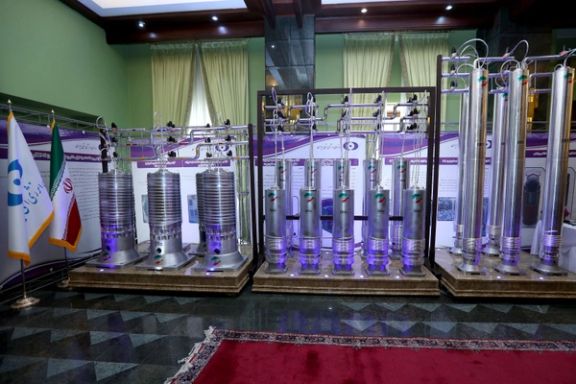
The United Nations nuclear watchdog says Iran has reversed a months-long slowdown in the rate at which it is enriching uranium to near weapons-grade.
Iran has "increased its production of highly enriched uranium, reversing a previous output reduction from mid-2023", the International Atomic Energy Agency said in a statement summarizing a confidential report to member states seen by Reuters Tuesday.
According to the IAEA report, Iran is enriching to up to 60% at its Pilot Fuel Enrichment Plant (PFEP) in its sprawling Natanz complex and at its Fordow Fuel Enrichment Plant (FFEP), which is dug into a mountain.
"The Agency confirms that, since the end of November 2023, the rate at which Iran has been producing uranium enriched up to 60% U-235 at these two facilities combined has increased to approximately 9 kg per month," the report to member states said.
By the IAEA's theoretical definition, around 42 kg of uranium enriched to 60% is the amount at which making a nuclear bomb with it cannot be excluded. Iran already has enough uranium enriched to up to 60%, if enriched further, to make three nuclear bombs.
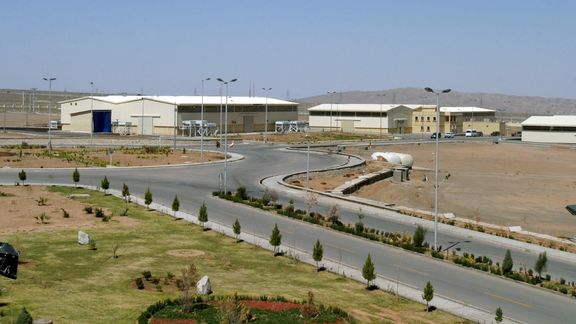
Earlier in the year, there were several reports that Iran's stockpile of uranium enriched to up to 60-percent purity, close to the roughly 90% of weapons grade, continued to increase albeit at a slower pace. The slowdown, which had reportedly begun by June, was seen as the result of secret talks between the United States and Iran that led to the release of US citizens held in Iran earlier this year.
Now that the Islamic Republic is internationally rebuked for the increased attacks on US and Israeli targets by its proxies across the Middle East, the IAEA has also become a little more vocal about Iran’s nuclear program. Several Iran-backed militia groups have increased attacks on US and Israeli targets across the region as well as international shipping as part of their attempts to pressure Israel, which has been at war with Hamas, another Iran-backed militia in Gaza.
IAEA inspectors first observed a change in production at Fordow on November 25, after which Iran said the change was made on November 22, and that the rate of production was returning to the pre-slowdown level there, the report said. Inspectors observed an increase in the production rate at Natanz on November 27, it added. The IAEA then verified the amount being produced at Natanz on December 19 and Fordow on December 24, it said. The IAEA did not formally notify its member states of the reversal of the slowdown until Tuesday's report.
Despite Iran’s constant violation of its nuclear commitments and efforts to stonewall the UN watchdog, the IAEA board of governors and its chief, Rafael Grossi, have failed to take any tangible actions. Grossi keeps reiterating that "significant safeguards issues remain outstanding" in Iran’s nuclear program and "no progress" has been made In Iran’s nuclear promises. In September, Iran also withdrew the designation of several inspectors assigned to conduct verification activities in Iran under the Non-Proliferation Treaty Safeguards Agreement. In late November, IAEA Director-General Rafael Grossi stated that Iran was not fulfilling many aspects of its commitments under the 2015 nuclear accord (JCPOA) and the March 2023 agreement.
Negotiations since April 2021 to revive the Obama-era JCPOA nuclear deal have failed to make progress, and Iran continues to expand its nuclear program. The previous US administration withdrew from the agreement in 2018 and imposed harsh economic sanctions. Iran retaliated by starting to violate the JCPOA limits and substantially increased both the quantity and the quality of its uranium enrichment.
Iran did not agree to a compromise plan proposed by the European Union in 2022 to revive the agreement, despite the Biden administration’s stated goal of finding a diplomatic solution. Earlier in the month, the Head of the Atomic Energy Organization of Iran (AEOI), Mohammad Eslami, said sanctions against the country must be lifted before Tehran fulfills its nuclear commitments.
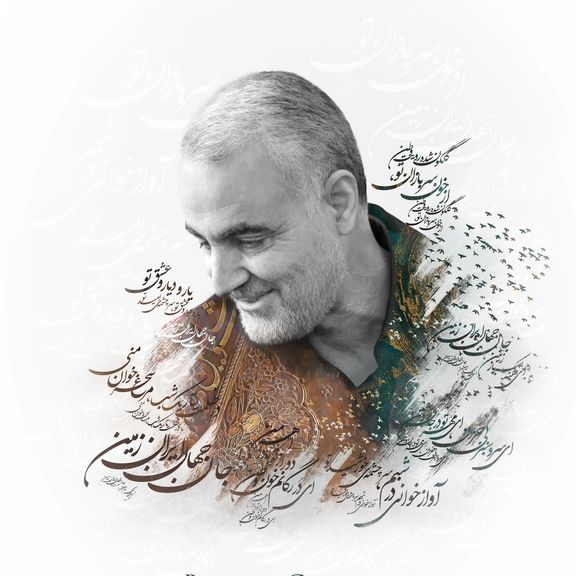
Iranian state television is to broadcast a series on the life of former IRGC Quds Force Commander Qasem Soleimani, portraying him as an almost saintly figure.
The series takes an unconventional route by abstaining from assigning an actor to play Soleimani's role, the first instance where an ordinary person is set to be portrayed in a manner reminiscent of a holy figure, much like revered and saintly figures including Shia Imams and Prophet Muhammad.
Mojtaba Amini, the series producer stated, "No one will assume the role of Soleimani. In numerous films we've produced, we crafted various heroes whom the audience embraced, liked, and followed. However, in productions like 'Terror', the audience is already acquainted with the hero."
Qasem Soleimani was killed in a US drone strike near Baghdad International Airport on January 3, 2020, under the directive of then-President Donald Trump.
Soleimani held a pivotal role in Iran's external military and intelligence operations, overseeing support for militant proxy forces, including Hezbollah and Iraqi Shiite militias engaged in hostilities against US forces in the region.
Following Soleimani's death, an Iranian Revolutionary Guard member faced charges of orchestrating a plot to assassinate John Bolton, the former US National Security Advisor, as a reprisal for the IRGC commander's killing. Former Secretary of State Mike Pompeo was also identified as a potential target within the same conspiracy.
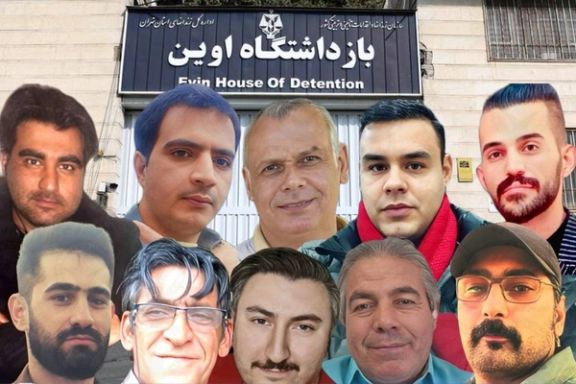
A court session against 11 political prisoners took place on Tuesday at the Revolutionary Court of Tehran in the latest mass trial of anti-regime voices.
No evidence was provided regarding the charges brought against the group, all of whom were detained by security forces between August 1 and November 20.
Among the accused, Kazem Ali-Nezhad, Arsham Rezaei, Meysam Gholami, Vahid Ghadirzadeh, and Payam Bastani-Parizi have previously faced arrests and convictions due to their civil and political activities.
The accused individuals, namely Fatemeh Haqparast, Mohammad-Reza Kamrani-Nezhad, Vahid Sorkh Gol, Kazem Ali-Nezhad Baranlou, Arsham Rezaei, Meysam Gholami, Vahid Ghadirzadeh, Ali-Asghar Hassani-Rad, Saman Rezaei, Payam Bastani Parizi, and Hojatollah Rafei, faced allegations including "conspiracy and collusion to commit crimes against internal/external security, propaganda against the system.
Charges also included insulting Ali Khamenei, the Supreme Leader of the Islamic Republic, insulting the memory of Ruhollah Khomeini, the founder of the Islamic Republic, and encouraging people to commit crimes against internal/external security," according to reports from the US-based Human Rights Activists News Agency (HRANA).
The Islamic Republic has a history of detaining, torturing, and imprisoning government critics active in civil and political spheres since its establishment. The recent wave of suppressing civil, political activists, and protesters by the government has intensified since the nationwide protests of Iranians against the Islamic Republic began in September 2022, persisting to the present day.
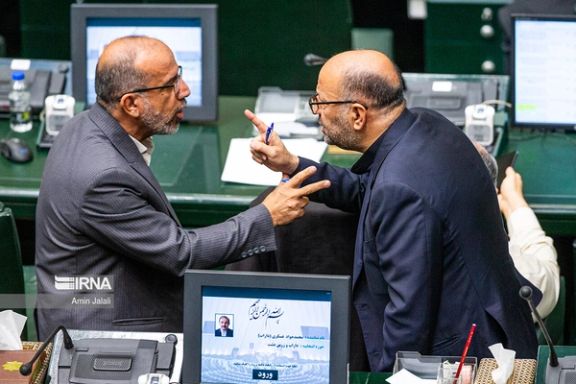
As conservatives are expected to dominate in the March parliamentary elections in Iran, smaller hardline groups are emerging in the run to secure seats in the Majles.
With the absence of reformist and moderate groups from the electoral competition due to disqualifications by the Interior Ministry and anticipated vetting by the Guardian Council, the conservative factions are seemingly unconcerned about the potential implications, notably the prospect of low voter turnout on the election day, March 1. In fact, there are reports that ultraconservatives would even welcome a mere 5-percent turnout.
Competition in the elections is taking place in the apparent absence of reformist and moderate groups that have been effectively barred from running for the Majles as most of their well-known candidates have been disqualified by the Interior ministry and other are expected to be barred by the hardliner-dominated Guardian Council.
The conservatives, however, do not appear to be bothered by the implications of rejecting other groups, most notably, a low turnout on the election day, March 1. Former reformist lawmaker Mostafa Kavakebian has quoted an incumbent conservative MP as having said that the ultraconservatives will be even happy with a 5-percent turnout.
However, the conservative factions are seemingly unconcerned about the potential implications of barring others, notably the prospect of low voter turnout on the election five-percent turnout.

While the ultraconservative Paydari Party, which currently holds sway in the government and parliament, maintains its dominant position, several smaller conservative groups are emerging, hoping to secure a few seats in the Majles to establish their political presence for the next four years.
Recent reports on the conservative landscape before the elections have identified at least seven conservative groups challenging the dominance of the Paydari Party. These groups all bear names suggesting support for the Islamic Revolution, making it difficult for non-Iranian readers to discern their positions. The key figures leading these groups, however, provide better insights into their current political stances.
These figures include vigilante leader Hossein Allahkaram, Housing Minister Mehrdad Bazrpash, Majles Speaker Mohammad Bagher Ghalibaf, controversial hardline cleric Hamid Rasaei, and other lesser-known conservative political figures. While they currently identify as conservatives, their ultimate goal is to secure a share of the limited 290 Majles seats.
Conservative activist Hedayatollah Khademi says the seven conservative groups might be shortlisted to around four groups. He says voters will look at the candidates’ background and will reject many of them even before they go to the polls.
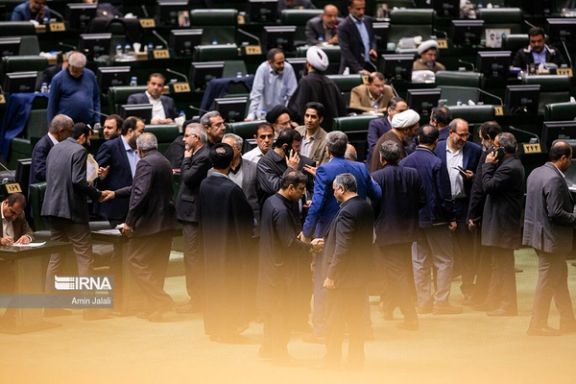
Each one of these groups aims to nominate at least 30 candidates for the 30 seats allocated to Tehran, where most Iranian politicians are based. In contrast, the reform and moderate camp has struggled to present even 30 candidates, as vetting and disqualifications by the Interior Ministry and the Guardian Council have limited their options. Former President Hassan Rouhani is said to be planning to give a list of only 16 candidates form his Moderation and Development Party, and apparently, he is not finding that as easy as he might have thought.
Another conservative analyst, Ahmad Bakhshayesh Ardestani, highlights a curious aspect of this competition. While a political heavyweight like Ghalibaf may secure a seat in the Majles for himself, it is unlikely that he will be able to bring anyone closely associated with him into the next parliament.
Moreover, this competitive landscape among conservatives is likely to result in a significant division within Iran's conservative bloc. Supreme Leader Ali Khamenei, who seeks to diminish the influence of moderates and reformists while maintaining conservative power, appears to welcome this division, as it could hinder the Paydari Party from winning an absolute majority, potentially creating complications for the political system. Khamenei's aim seems to be consolidating power by weakening and dividing conservative factions to ensure his own supremacy.
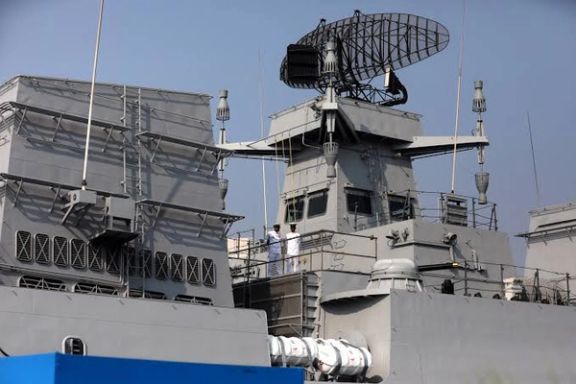
Following a recent drone attack launched from Iran on a merchant vessel off the Indian coast, India's navy will deploy guided missile destroyers in the Arabian Sea.
The deployment has been treated as a proactive measure aimed at "sustaining a deterrent presence." The Pentagon statement Saturday said the Chem Pluto, "a Liberia-flagged, Japanese-owned, and Netherlands-operated chemical tanker" had been targeted by "a one-way attack drone fired from Iran", raising alerts in the region which has become a flashpoint since Iran-backed Houthis announced they would attack all vessels in the Red Sea and surrounding area.
The Yemenis' announcement was made in the wake of the Gaza war, the Iran-backed Yemeni proxy aligning with Hamas in the wake of its war on Israel. Responding to the latest incident so close to its shores, the Indian Navy has deployed guided missile destroyers, including INS Mormugao, INS Kochi, and INS Kolkata.
The MV Chem Pluto, arrived in Mumbai on Monday, prompting an ongoing investigation by the Indian navy. Preliminary findings point to a drone attack on Saturday, and the navy has highlighted the need for further forensic and technical analysis to determine specific details, such as the type and quantity of explosive used.
A collaborative investigation into the attack is currently underway, involving various agencies, subsequent to the comprehensive analysis conducted by the navy's explosive ordnance team. The vessel's crew consisted of 21 Indians and one Vietnamese citizen.
On Monday, Iran's foreign ministry spokesperson refuted the US claim attributing the ship's attack to Iran, dismissing it as "baseless." The US has formed a more than 20-member coalition to protect the Red Sea which is the world's biggest oil passageway in a bid to calm tensions.